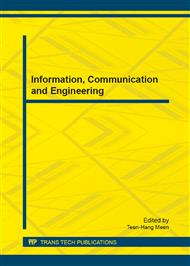p.456
p.462
p.467
p.472
p.477
p.485
p.491
p.497
p.502
Effects of Deep Cryogenic Treatment on Tribological Properties of the Tool Steel DC53
Abstract:
The bad quality of machining surfaces caused by the micro wear of pressing parts has been a very big trouble for the engineers over the past decades. In order to decrease the surface wear, the technology of heat treatment is used popular. Many papers about the heat treatment technology had been proposed. Especially, the deep cryogenic treatment has been used widely for the purpose of wear-resistance in the industry. Moreover, the method of using variations of surface magnetization to monitor the dynamic tribological properties between the metal pairs has been applied successfully by the author. Therefore, this paper is base on the above statements to further investigate the tribological properties of the tool steel by deep cryogenic treatment. It can be clarified for effects of different deep cryogenic treatment temperatures on wear-resistance of the tool steel DC53. Besides, the purpose of better quality and faster product speed of the pressing process can then be obtained.
Info:
Periodical:
Pages:
477-481
Citation:
Online since:
February 2013
Authors:
Price:
Сopyright:
© 2013 Trans Tech Publications Ltd. All Rights Reserved
Share:
Citation:


